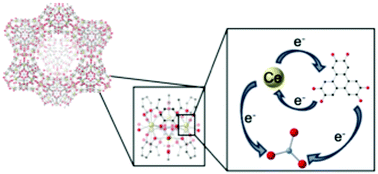Our next webinar will take place via the internet on Tuesday February 15th at 7 PM EST/12 AM GMT. Sign up on our mailing list to receive the Zoom link!
We hope to see/hear from you all at one of our sessions or as one of the next speakers. If you are an early career scientist and would like to present your research, don't hesitate to submit an abstract today! For now, please learn more about our current speakers and their research below. We also thank the generous support from Cell Reports Physical Science, Merck, and the Royal Society of Chemistry.

Our featured speakers this week are Julia Knapp (Graduate Student, Northwestern University, USA), and Samuel Newman-Stonebraker (Graduate Student, Princeton University, USA).
LEARN MORE ABOUT THE SPEAKERS AND THEIR TALKS BELOW

JULIA KNAPP
Biography: Julia Knapp grew up in Maryland, USA and received her B.S. (2018) in chemistry and mathematics from Randolph-Macon College. There, she studied the activation of small molecules by water-soluble iridium and rhodium complexes under Prof. Serge Schreiner. She joined Prof. Omar Farha’s group at Northwestern University in November 2018; her research focuses on exploring properties of f-block elements through incorporation into metal-organic frameworks (MOFs). She is currently a visiting graduate student scientist at Los Alamos National Laboratory in the Inorganic Isotope and Actinide Chemistry Group.
Title of Talk: Electron Transitions in a Ce(III)-Catecholate Metal-Organic Framework

Abstract: A rare three-dimensional catecholate-based Ce(III) metal–organic framework (MOF), denoted as NU-1701, has been synthesized and crystallographically characterized. Density functional theory calculations highlight various possible electronic transitions that may present in NU-1701. These transitions are competitive and indicate increased lanthanide character of Ce(III).

SAMUEL NEWMAN-STONEBRAKER (on Twitter @SamNStonebraker)
Biography: Sam was born and raised in New York City, before moving to Ithaca, NY to attend Cornell University. At Cornell, Sam worked in the lab of Professor Geoff Coates, where he studied double metal cyanide complexes as heterogeneous catalysts for epoxide/CO2 copolymerizations. After graduating with a BA in Chemistry in 2017, he moved to Princeton University to begin gradate studies in Professor Abby Doyle’s lab, where he is currently a fifth year graduate student. In the Doyle Lab, he has studied monodentate phosphine ligand effects in Nickel cross-coupling catalysis through high throughput experimentation, data science, and fundamental organometallic exploration.
Title of Talk: New insights into the structure-reactivity relationships of monodentate phosphines in Nickel catalysis

Abstract: Transition metal-catalyzed transformations employing Pd are among the most important bond-forming reactions available to synthetic chemists. Many of the advances in versatility and practicality of Pd-catalyzed reactions over the past two decades can be attributed to rational ligand and precatalyst design, made possible by thorough mechanistic investigations into the structure-reactivity relationships (SRRs) of the ligands/complexes important in catalysis. In the same timeframe, Ni has garnered considerable attention as a more reactive and sustainable alternative to Pd. However, a similar understanding of the specific ligand features important for a reaction’s success are lacking, hindering further development and widespread adoption. Guided by a new comprehensive library of phosphine steric and electronic descriptors (Kraken) developed by the Gensch, Sigman, and Aspuru-Guzik groups, we have identified and mechanistically interrogated the specific structural features of monodentate phosphines that lead to a Ni catalyzed reaction’s success, and perhaps equally importantly, its failure. Spectroscopic and crystallographic studies revealed that a unique Kraken steric descriptor, %Vbur (min), predicts and rationalizes whether a phosphine preferentially forms mono- (L1) vs. bisligated (L2) Ni complexes. Analysis of Ni catalyzed cross-coupling reaction data with 90 ligands, collected using High Throughput Experimentation, revealed that only ligands with %Vbur (min) values less than 32% were active. This catalytic reactivity cliff matched the ligation state cutoff observed in stoichiometric organometallic studies, with only ligands that readily formed L2 complexes active in catalysis. Notably, our catalytic and mechanistic studies demonstrated that Tolman Cone Angle—historically the most important phosphine steric descriptor available to organometallic chemists—was incapable of rationalizing phosphine ligation state with Ni. Concurrently, a statistical classification workflow using %Vbur (min) was developed, providing a roadmap for further targeted mechanistic study of ligand SRRs by categorizing large amounts of catalytic yield data based on distinct mechanistic/structural outcome.
